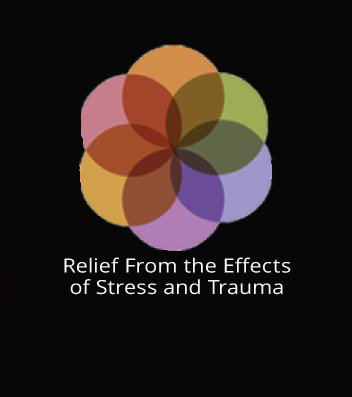What is Fight-or-Flight?
It can now be clinically measured that due to the stresses and traumas of our lives, nearly everyone
is stuck in a constant state of survival, called fight-or-flight.
And, once stuck, we are no longer able to function to our fullest potential.
History of stress
In the 1930's, Harvard physiologist Walter Cannon was the first to coin the term fight-or-flight. He used it to describe our innate defense mechanism in the face of a threat or danger.
The classic example is a cave man's physiological response to seeing a tiger in the trees. The imminent danger triggers subconscious reflexes that instantaneously recruit his resources to ensure his survival. His body prepares to
fight
to the death or flee
for his life.
Adrenaline and other hormones, like cortisol, are released into his bloodstream. The liver releases stored sugar for an immediate energy boost. Blood flow increases to his brain, heart, lungs and large muscles (at the expense of lower priority functions like digestion, immunity, reproduction, etc). His heart beats faster and his blood pressure rises. His breathing becomes more shallow and rapid to obtain more oxygen. Perspiration increases to keep his body cool. His senses become heightened and his pupils dilate to let in more light. His vision tunes out extraneous peripheral information so he can focus on the tiger, or zero in on his escape route. His muscles become tensed, ready to fight or flee.
During the 1950's, in his classic book "The Stress of Life", Hans Selye expanded on Cannon's work, finding that our innate response to stress was the same whether it be a tiger in the trees, a boss with a scowl, getting cut off in traffic, having to sit for an exam or having an argument with your spouse.
Stress is stress, and always triggers the same innate survival mechanism.
The Stress Response
Selye described his General Adaptation Syndrome as a three-stage survival mechanism:
Stage 1: The alarm reaction
We are all familiar with the heightened reaction we feel when we've narrowly avoided a traffic accident, or the nervous anxiety that consumes us before taking an important test or speaking in public. All those primitive reflexes kick in, from the sweaty palms and goose bumps, to the quivering tense muscles and shortness of breath. No, there's no tiger in the audience, but according to our nervous system, there might as well be.
Stage 2: The stage of resistance
This stage is what happens when stress occurs over a significant length of time. As world-renowned researcher Bruce McEwen emphasizes in his book 'The End of Stress as We Know It,' "stress protects under acute conditions, but when activated chronically it can cause damage and accelerate disease."
It now appears that most of us are walking around in this stage.
Most would agree life is already stressful before even considering some of the high-stress challenges we must endure. Intense situations like demanding jobs, rigorous schooling, long-term troubled or dysfunctional relationships, prolonged illnesses or accident rehabilitation.
To survive, we somehow find a balance or equilibrium that allows us to function day after day under the pressure. The surge of the alarm reaction is dampened, but our engines are constantly idling
in a perpetual low level fight-or-flight.
Despite the constant drain on our system, in order to cope
We subconsciously redefine this chronically stressful state as
normal.
As this process repeats itself through life, the cumulative effect over time can be dramatic. We do the best we can, but inevitably we find ourselves functioning less effectively, usually well below our true capabilities. We lose our resilience and without major life style changes, we gradually become more and more susceptible to various stress-related illnesses.
"We carry our stress with us for a
lifetime."
These are the opening words of J. Douglas Bremner's book, 'Does Stress Damage the Brain?' He goes on to clearly demonstrate how our "short-term survival response can be at the expense of long-term function," ultimately causing permanent damage in our brains, our bodies and our psyches.
Try this 'Stage 2' experiment
As stated above, most of us are stuck in an idling fight-or-flight. Here's proof:
Stop for a moment and take a nice big deep breath. Where does the air go?
Did your shoulders rise as most of the air went into your expanded chest? Or did it go deeply into your belly like a baby breathes, as it does when we're truly relaxed?
Unless you're a singer or yoga practitioner who has been trained in 'belly-breathing', you're probably like most people, a shallow chest breather, even when relaxed. We live stressful lives, and we've come to accept chest-breathing as normal. This is just one sign of being stuck in a chronic state of fight-or-flight.
Stage 3: Stage of exhaustion
This is the final stage of Selye's General Adaptation Syndrome. After prolonged stress, the system resources become depleted. This is classic 'burn out,' with fatigue, adrenal exhaustion and a weakened immune system. The physical signs of alarm can reappear and the system shuts down, becomes debilitated and ultimately death may even occur.
In his book 'Why Zebras Don't Get Ulcers,' Robert Sapolsky presents evidence that it's not the depletion or exhaustion, but the stress response itself, that ultimately causes the body to breakdown.

